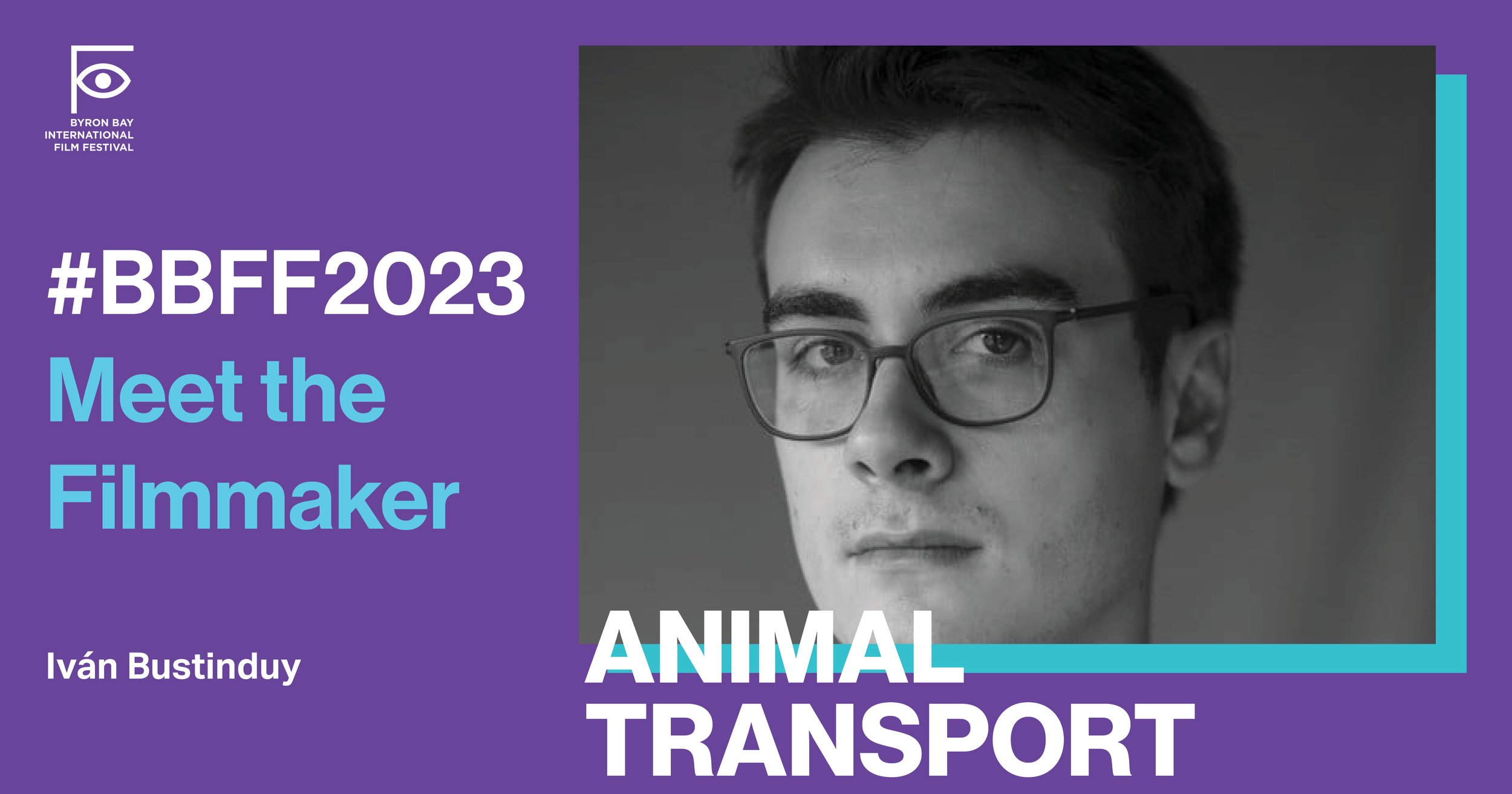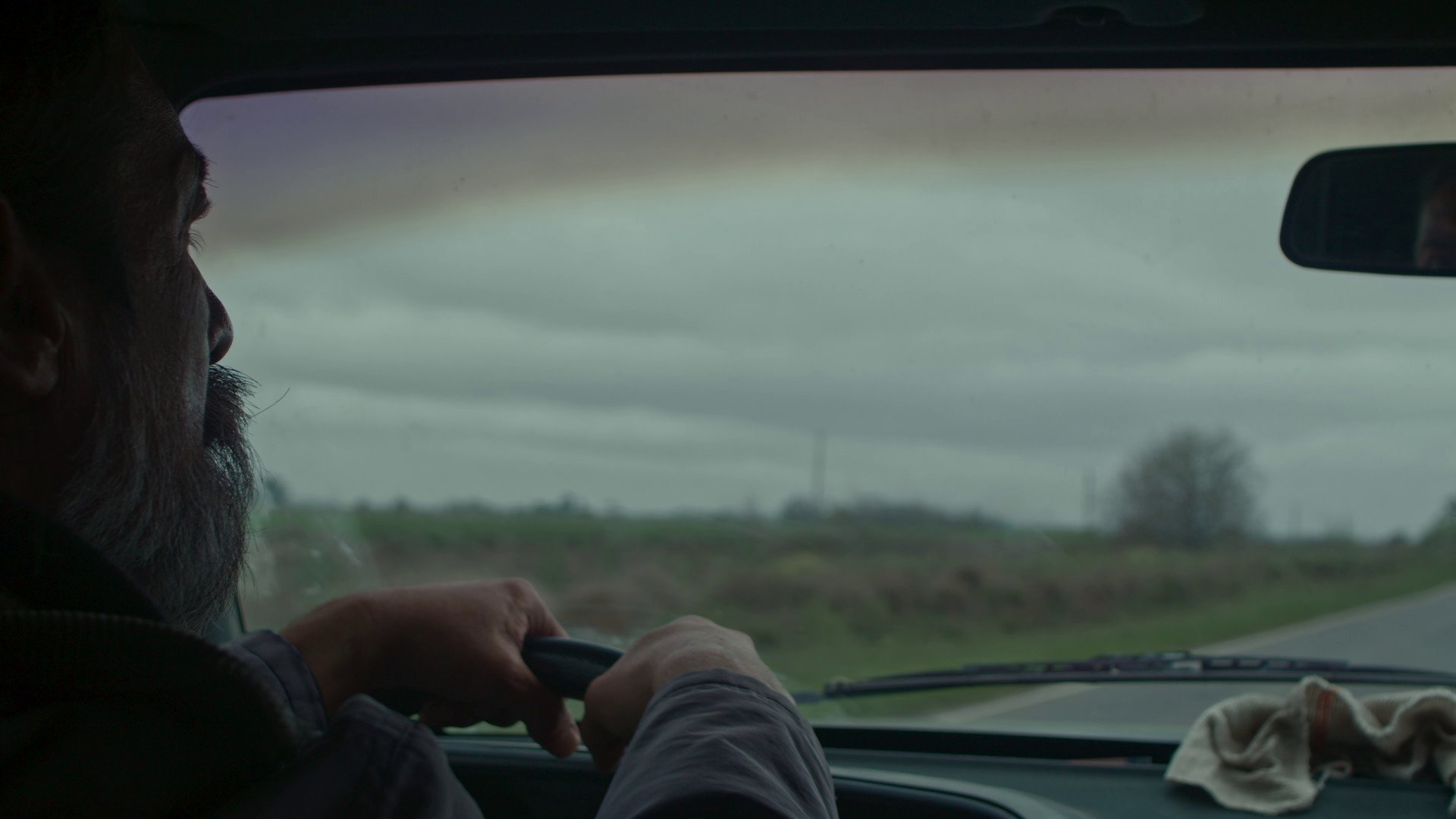BBFF2023 Meet the Filmmaker: Iván Bustinduy
Animal Transport
In ‘Animal Transport’, a man returns to his job in a company that transports animals. On his first trip, one of the cages doesn't seem to be carrying what it should. The mystery lurking in his truck pushes him to the limit of his own sanity.
We spoke with director Iván Bustinduy, about the process of making his captivating short film, ‘Animal Transport’.
Screening in the International Shorts Session at Palace Cinemas Byron Bay
Sunday 29th October at 3:00pm
Buy tickets
How did you come to discover the story in your film?
The story arose from an original idea of a friend, Matías Gryńczyk, who used to work at a company that transported animals through the interior of Argentina. It occurred to him once while making a shipment: What would happen if in one of the cages I carry was a man? He was interested in the comic side of the idea. For example, a scene where the animal carrier stops at a gas station to go to the bathroom, and the animal takes advantage of the stop to open its own cage, lift the lid of the trunk and go too. Although I find this premise very interesting, I felt like taking the idea elsewhere.
Can you tell us a bit about your film and what inspired you to create it?
Before Matías' idea, I had been dabbling in the fantasy genre, a departure from the prevailing style in Argentine independent cinema. This genre allowed me to break free from the monotony of realistic portrayals and passive storytelling.
During the pandemic, when opportunities began to emerge, Matías presented his concept. I decided to develop it within the Rutemberg Collective, the production company I’m a part of. With the support of talented individuals, including Francisco Castro Pizzo (Proyecto Excursus), and a dedicated technical and artistic team, we brought the project to life creatively and productively.
Have you always wanted to be a filmmaker?
I discovered filmmaking after a series of starry dreams. As a child, I dreamt of becoming a graphic humourist, and in my teenage years, I was in a rock band. However, both paths led to disillusionment. At fifteen, I started watching movies voraciously during school vacations, which eventually sparked my interest in filmmaking. This unexpected journey began when my first girlfriend, Manuela, introduced me to a film program, and I've been in the industry for nine years now.
What elements or aspects of your filmmaking style can audiences expect to see in your film?
Audiences can expect to see elements of my filmmaking style that resist the adaption of cinema seen in today's world. In an era where project development labs, co-production forums, and financial aid often shape the creative process, resulting in films that can feel strikingly similar despite their geographic origins, I believe it's crucial to break free from this international style. I don't adhere strictly to the auteur theory. Instead, I advocate for building alternative approaches to writing, producing, and distributing films that foster more personal and autonomous creative journeys.
This autonomy, I believe, should be collective and rooted in the storytelling and acting traditions of the film's home country. With 'Animal Transport,' I hope to embody this perspective, promoting a dialogue within Argentine cinema, against an increasingly insipid way of making films.
What message or emotions do you hope your film conveys to the audience?
My goal in making ‘Animal Transport’ was to put the character in front of a problem that could happen in a few years, in a working world that will probably be (even more) inhumane. I was never interested in conveying a specific line or message, but rather in putting the character and the viewer in front of a series of questions.
The theme of BBFF2023 is ‘Anything is possible’. How does your film align with this theme?
I believe that this is the premise of any film that ventures into the fantastic genre, a way of thinking about cinema that does not exclude a political point of view on reality.
Collaborative efforts often play a significant role in filmmaking. Could you share some insights into the teamwork and collaborations that contributed to the success of your film?
Argentine short films lack systematic state support, beyond a handful of films a year. In a country grappling with an annual inflation rate of 140%, producing a short film becomes feasible only through the unwavering dedication of a committed team, like the one behind 'Animal Transport’. We had no economic support, yet we managed to bring this ambitious project to life — a film shot entirely on location in a distant town, featuring animals, trucks and a large cast. It was the immense dedication of our team that made it all possible.
What are you most looking forward to in terms of audience reactions and engagement during your screening?
The short film will have its Australian premiere in Byron Bay. This holds special significance for me because I've drawn inspiration from Australian cinema of the 70s-80s. These films, with their stark landscapes and imaginative handling of supernatural elements, such as 'Harlequin’, 'Razorback’, and 'Wake in Fright’ have been a major influence. I'm very pleased to have the opportunity to premiere at the festival, and looking forward to hearing the film's reception in Byron Bay.
Could you share a memorable behind-the-scenes moment while filming that you think the audience would find interesting or amusing?
During filming, an unexpected storm threatened our project. We had to decide between completing the crucial shots or facing the logistical nightmare of rescheduling and re-shooting, which was financially impossible.
The problematic shots were for a pivotal cargo inspection scene, marked by the characters' hair moving inconsistently due to the stormy weather. To tackle this continuity issue, we devised a solution. We created a makeshift micro-climate by positioning three cars around the characters, shielding them from the wind, and adjusted the camera lens to capture a tighter shot, concealing the cars' presence. You may notice the ferns moving to the sound of the storm in the background of the film.





